https://moxietalk.com/category/blog/
Ok everyone, how many people can you name that have their own U.S. Postage stamp, BUT are not “Household names?” Well, not many I suspect, but for Rube Foster (see below), he got his very own by the U.S. Postal service in 2009, now that’s moxie pure and simple.
Here’s how:
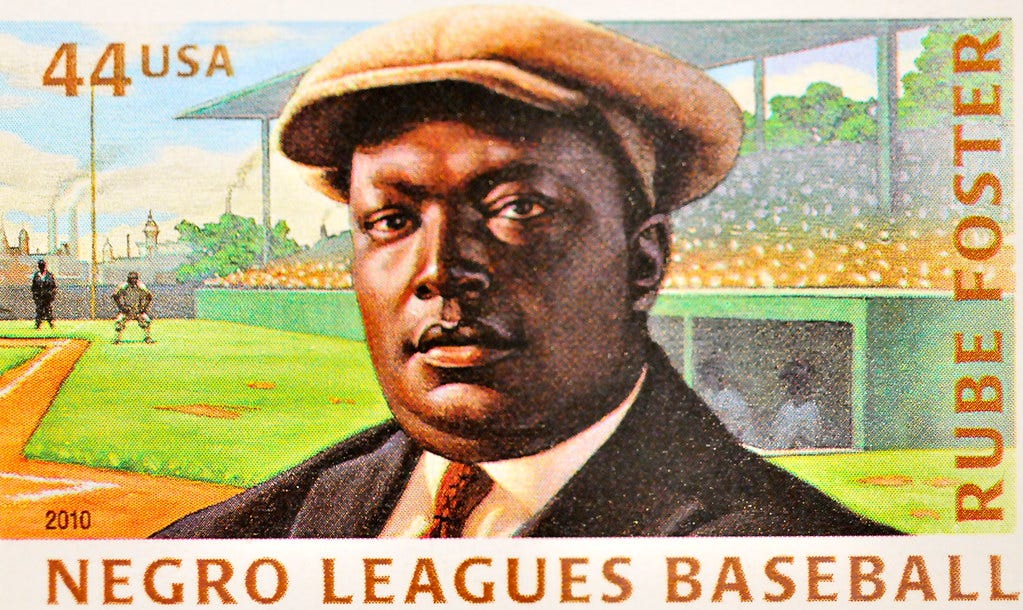
The Stars. The ABCs. The Keystones. The Elites. The Hornets. The Barons. The Giants.
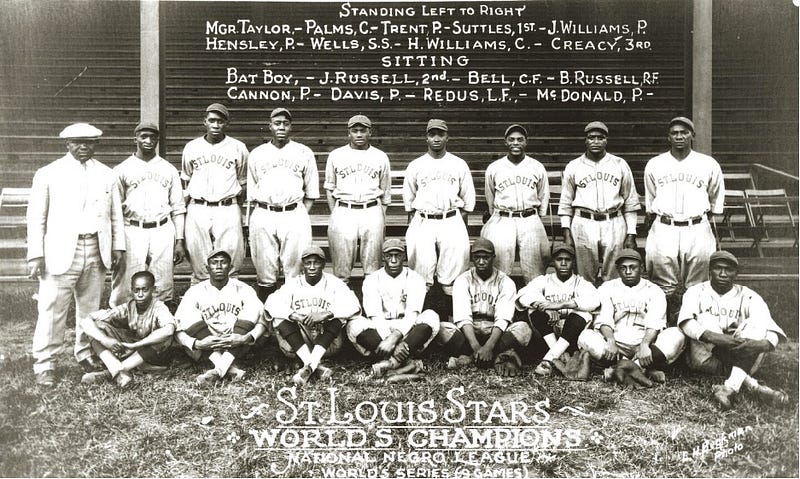
And perhaps the greatest of them all, the Monarchs.

You just think you know the greatest baseball teams of all time, and unless you know these names, there are significant gaps in your knowledge!
These teams were all a part of the National Negro League, which was founded one hundred years ago on February 20, 1920!
The league was founded by Andrew “Rube” Foster, a man who possessed big-league moxie.
Here’s how:
Moxie’s got game.
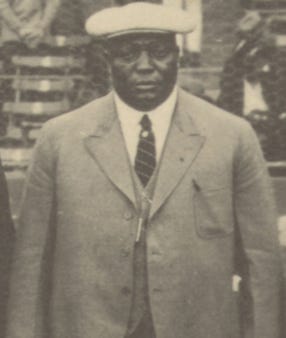 Rube Foster knew the game of baseball inside and out. He was a star pitcher who enjoyed a fifteen-year career playing for five different teams. He was a more than reliable winner on the mound, posting season a 51–4 record at one point in his career and averaging eleven strikeouts per game at another. No less a luminary that Honus Wagner called him one of the greatest pitchers of all time.
Rube Foster knew the game of baseball inside and out. He was a star pitcher who enjoyed a fifteen-year career playing for five different teams. He was a more than reliable winner on the mound, posting season a 51–4 record at one point in his career and averaging eleven strikeouts per game at another. No less a luminary that Honus Wagner called him one of the greatest pitchers of all time.
Foster could do more than just play the game; he could coach others well, too. Foster’s skill as a player earned him respect, but it was his leadership skills that really helped him build the Leland Giants — later the Chicago American Giants — into a dynasty.
Moxie knows how to get down to business.

Others had tried and failed to form a Negro league, but Foster had the moxie to get the effort off the ground.
In 1920, America was recovering from World War I. Blacks had served their country with great honor and valor, and while the racist attitudes of some may have shifted, systemic and overt racism was still abundant. Attacks on Black communities were not uncommon, and riots had broken out in several cities across the country.
To Foster, the time was right to make a move and establish a league. He made his case in the Chicago Defender, a prominent Black newspaper. If Blacks didn’t organize and establish their own successful league, white team and league owners would continue to exploit them, Foster argued. Players would not develop or be compensated appropriately. The game would suffer, and Black players and teams would be left behind.
On Feb. 13, 2020, Foster invited the owners of several prominent Black teams to a meeting in Kansas City, Mo. He laid out his plan for a league and by the end of the evening, the owners signed the charter documents he had drafted.
Foster then shepherded the fresh young league through its early years by making great deals to play in mostly white-owned major and minor league stadiums. He paid close attention to the health of each team and made sure the matchups on the schedule were exciting and would draw a crowd.
His careful stewardship paid off, and the league gained solid footing and games drew crowds. Because he insisted on Black ownership and leadership, his efforts benefited the Black community and players.
Foster proved he was a giant on and off the field.
Moxie begins with the end in mind.
Foster embarked on this whole venture of establishing a league in hopes that it would eventually be unnecessary. He established the league to showcase the fact that Black people could successfully play, coach, manage, and own teams. His long game was not a separate league that would continue in perpetuity; his goal was an integrated league that featured the best players, coaches, managers, and owners no matter their color.
Given what Foster was able to do with the National Negro League, imagine what he would have accomplished as an MLB commissioner?
In fact, in 1981 Foster was elected to the National Baseball Hall of Fame, and was the first representative of the Negro leagues elected as a pioneer or executive.
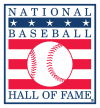
But alas, it wasn’t meant to be. A freak accident in an Indianapolis hotel left him weakened, his physical and intellectual capacity greatly diminished. He struggled with ill health the last several years of his life and spent most of those years in an asylum. He finally succumbed to a heart attack in 1931 and died at the age of only 51.
He didn’t live to see the game and business he loved fully integrated, but he did help set the wheels in motion, and for that Rube deserves a sincere “tip of the hat” in his honor and valor for the game!
Here is Rube Foster’s plaque at the National Baseball Hall of Fame & Museum:
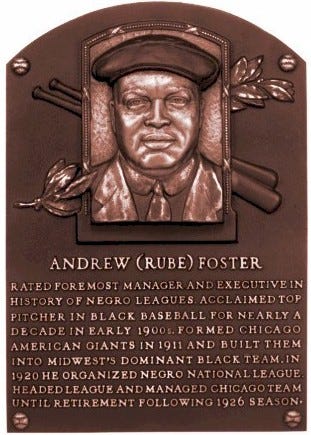
Rube Foster’s Wikipedia Page: https://en.wikipedia.org/wiki/Rube_Foster
National Negro League’s Wikipedia Page: https://en.wikipedia.org/wiki/Negro_National_League_(1920%E2%80%931931)
National Baseball Hall of Fame and Museum’s Wikipedia Page: https://en.wikipedia.org/wiki/National_Baseball_Hall_of_Fame_and_Museum





































